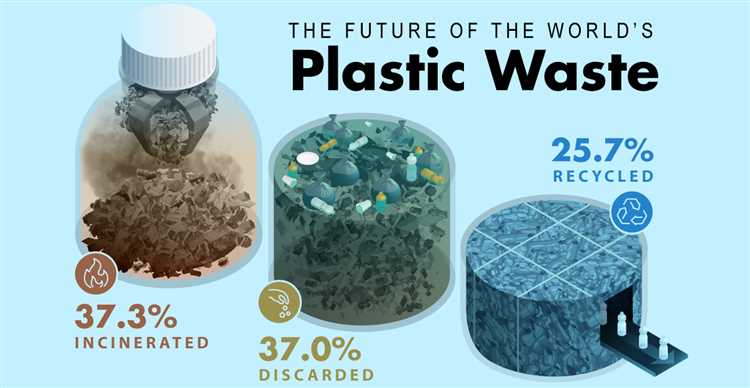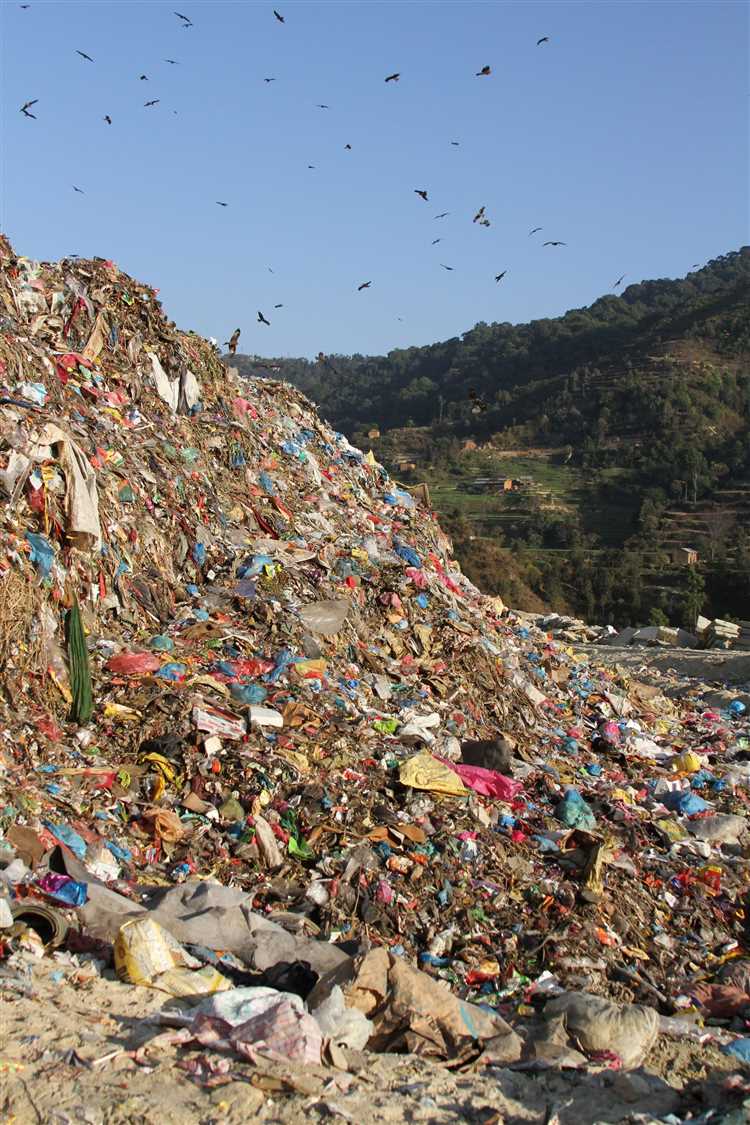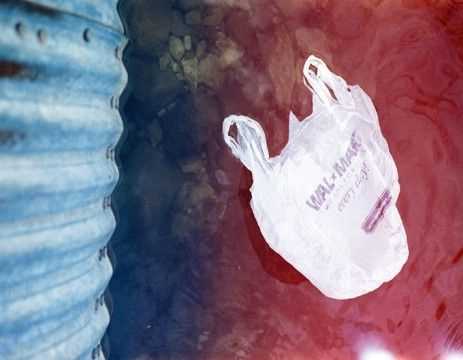
In recent years, the issue of plastic pollution has become increasingly prominent, captivating the attention of scientists, environmentalists, and policymakers alike. Plastic waste has infiltrated our oceans, rivers, and even the air we breathe, causing irreversible damage to marine life and ecosystems. With the overwhelming amount of plastic being produced and discarded every day, it begs the question: will the problem of plastic ever disappear?
Plastic, with its versatile properties and low cost of production, has undoubtedly revolutionized various industries and aspects of our lives. However, the drawbacks of plastic – its non-biodegradability, long lifespan, and harmful effects on the environment – have posed a significant challenge. Governments, organizations, and individuals around the world are now grappling with finding effective solutions to tackle this mounting problem.
Efforts to address the plastic problem have taken multiple forms, including recycling initiatives, bans on single-use plastics, and the development of biodegradable alternatives. While these measures have shown some progress, they are far from being the ultimate solution. The sheer scale of plastic production and consumption, coupled with the lack of global consensus and infrastructure, make the eradication of plastic a complex and daunting task.
Furthermore, the issue of plastic extends beyond the physical waste. Microplastics, tiny particles that result from the breakdown of larger plastic items, have permeated our environment, from the deepest parts of the ocean to the highest peaks. These microplastics have the potential to enter the food chain, posing a threat to human health as well. Addressing this invisible but pervasive form of plastic pollution requires innovative approaches and breakthrough technologies.
While the complete disappearance of plastic seems improbable in the near future, it is crucial to continue raising awareness, promoting sustainable practices, and investing in research and innovation. Only through concerted efforts and collective action can we overcome the plastic problem and pave the way towards a cleaner and more sustainable future.
- Is There a Solution?
- 1. Reduce
- 2. Recycle
- The Impact of Plastic Pollution on the Environment
- 1. Ecological Damage
- 2. Contamination of Natural Resources
- The Challenges of Recycling Plastics
- Alternative Materials and their Prospects
- Biodegradable Materials
- Compostable Materials
- Government Regulations and Policies
- 1. Bans and Restrictions
- 2. Extended Producer Responsibility (EPR)
- 3. Plastic Taxes
- The Role of Education and Awareness
- Collective Responsibility and Individual Actions
- The Role of Collective Responsibility
- The Power of Individual Actions
- Q&A:
- What are the main reasons for the problem of plastic?
- Will the problem of plastic ever be solved?
- How long does it take for plastic to decompose?
- What are some alternatives to plastic?
- Are there any initiatives tackling the problem of plastic?
- How serious is the problem of plastic pollution?
- What are the main sources of plastic pollution?
Is There a Solution?
While the problem of plastic pollution may seem overwhelming, there are potential solutions that can help mitigate its impact. Here are a few possible ways to address the issue:
1. Reduce
One of the most effective approaches to tackling plastic pollution is to reduce the amount of plastic waste generated in the first place. This can be achieved through various means, such as:
- Encouraging the use of reusable alternatives, such as cloth bags instead of plastic bags
- Promoting the adoption of eco-friendly packaging materials
- Implementing strict regulations on single-use plastics
By reducing our reliance on plastic and finding alternatives, we can significantly decrease the amount of plastic waste entering our ecosystems.
2. Recycle
Recycling is another important aspect of addressing the plastic problem. By recycling plastic waste, we can divert it from landfills and give it a second life. However, it is crucial to improve recycling infrastructure and implement effective recycling programs to ensure that the process is efficient and widespread.
Furthermore, efforts should be made to educate and raise awareness among individuals about the importance of recycling and how to do it properly. This will help maximize the amount of plastic that is recycled and minimize contamination.
3. Innovate
The development of innovative technologies and materials can play a significant role in solving the plastic problem. Researchers and scientists are constantly working on finding new ways to tackle plastic pollution, such as:
- Creating biodegradable plastics that break down more easily in the environment
- Exploring alternatives to plastic, such as plant-based materials
- Developing advanced recycling technologies to process more types of plastics
These innovations have the potential to revolutionize the way we produce, use, and dispose of plastic, ultimately reducing its impact on the environment.
In conclusion, while the problem of plastic may not completely disappear, there are solutions that can help mitigate its effects. By reducing our consumption, improving recycling practices, and investing in technological advancements, we can work towards a more sustainable future with less plastic pollution.
The Impact of Plastic Pollution on the Environment
Plastic pollution has become a significant threat to the environment. The production and consumption of plastic have skyrocketed in recent decades, leading to a massive accumulation of plastic waste in landfills, rivers, oceans, and other natural habitats. This pollution has severe consequences for wildlife, ecosystems, and human health.
1. Ecological Damage
Plastic pollution poses a severe threat to marine wildlife. Countless marine species, including fish, seabirds, turtles, and marine mammals, mistakenly consume plastic or become entangled in plastic debris, leading to injury, suffocation, and death. Plastic waste can also disrupt marine ecosystems by altering the behavior and distribution of marine organisms, disrupting the food chain, and damaging coral reefs and other crucial habitats.
2. Contamination of Natural Resources
In addition to causing harm to marine life, plastic pollution also contaminates natural resources essential for human survival. As plastic breaks down into microplastics, it can infiltrate water sources, soil, and the air we breathe. Microplastics have been found in tap water, bottled water, seafood, and even the salt we consume. The long-term effects of ingesting these microplastics are still not fully understood, but they raise concerns about potential health risks.
To emphasize the extent of the problem, let’s take the example of single-use plastic bags. Every year, millions of these bags are discarded and end up in the environment. They can take hundreds of years to decompose. In the meantime, they clog drainage systems, pollute rivers, and contribute to floods during rainstorms.
To summarize, plastic pollution has a wide-ranging impact on the environment. It threatens marine life, disrupts ecosystems, contaminates natural resources, and potentially poses risks to human health. Urgent and sustained efforts are needed to tackle this issue and shift towards more sustainable alternatives.
| Effects of Plastic Pollution on the Environment: |
|---|
| 1. Ecological damage |
| 2. Contamination of natural resources |
The Challenges of Recycling Plastics
Recycling plastics presents a number of challenges that make it difficult to fully address the problem of plastic waste. One major challenge is the sheer quantity of plastic waste generated worldwide. With increasing populations and consumption rates, the amount of plastic waste being produced is continuously growing. This creates a strain on recycling facilities and infrastructure, as they struggle to keep up with the demand.
Another challenge lies in the different types of plastics available and the varying recycling processes required for each type. Plastics are categorized into different resin types, such as PET, HDPE, PVC, and more. Each resin type has its own properties and requires specific recycling methods. This can complicate the recycling process, as separating and sorting different resin types can be time-consuming and costly.
Contamination is also a significant challenge in plastic recycling. Plastics that are not properly sorted or cleaned can contaminate the recycling stream and reduce the value of recycled materials. Contaminants such as food residue, dirt, or other non-plastic materials can make it difficult to process and recycle plastics efficiently.
Furthermore, the economics of plastic recycling present challenges as well. The cost of recycling plastics can be high, especially when compared to the cost of producing new plastics from virgin materials. This can make it less economically viable for recycling facilities to invest in the necessary equipment and processes to recycle plastics effectively.
Lastly, public awareness and participation play a crucial role in the success of plastic recycling. Many people are unaware of the importance of recycling plastics or are not properly educated on how to recycle correctly. This lack of awareness and participation can hinder the recycling process and contribute to the ongoing problem of plastic waste.
In conclusion, the challenges of recycling plastics are multifaceted and require concerted efforts from individuals, industries, and governments. Improved infrastructure, increased recycling education, and the development of innovative recycling technologies are essential to overcoming these challenges and reducing the impact of plastic waste on our environment.
Alternative Materials and their Prospects
Plastic has become a significant environmental problem, causing pollution in oceans, landfills, and even the air. In recent years, there has been a growing global concern about finding alternative materials that can replace plastic and reduce its negative impact on our planet.
Biodegradable Materials
One promising option to replace plastic is the use of biodegradable materials. These materials can break down naturally in the environment, eliminating the need for long-term disposal and reducing the risk of pollution. Some examples of biodegradable materials include plant-based plastics, such as cornstarch and sugarcane, as well as natural fibers like hemp and bamboo.
Biodegradable materials offer several advantages. Firstly, they can significantly reduce plastic waste and pollution as they break down into harmless substances. Secondly, they require fewer resources for production and are often sourced from renewable materials, making them a more sustainable choice. However, there are challenges to widespread adoption, such as the higher cost of production and the limited availability of suitable alternatives.
Compostable Materials
Compostable materials are another viable option for replacing plastic. These materials can not only break down naturally but also provide nutrients for the soil during the decomposition process. Compostable materials are often made from organic matter, such as food waste or agricultural by-products.
One significant advantage of compostable materials is their ability to close the nutrient loop by returning valuable nutrients to the soil, promoting sustainable agriculture. They also have the potential to reduce landfill waste and contribute to the reduction of greenhouse gas emissions. However, compostable materials require specific conditions for proper degradation, such as controlled composting facilities, which limits their widespread use.
It is important to note that the development and adoption of alternative materials alone will not solve the problem of plastic pollution. It requires a combination of efforts, including reducing overall plastic consumption, improving waste management systems, and fostering a culture of recycling and reusing.
Moreover, the potential impacts of alternative materials on the environment should also be carefully evaluated to ensure they do not create other harmful consequences. Life cycle assessments and research on environmental impact are crucial in making informed decisions about the use of alternative materials.
In conclusion, while alternative materials offer promising solutions to the problem of plastic pollution, their widespread adoption will depend on various factors including cost, availability, and environmental impact. By investing in research and development, as well as promoting sustainable practices, we can work towards a future where plastic is no longer a threat to our environment.
Government Regulations and Policies
The issue of plastic pollution has gained global attention in recent years, leading many governments to implement regulations and policies aimed at addressing the problem. These regulations and policies vary from country to country, but they all share a common goal: reducing plastic waste and its impact on the environment.
1. Bans and Restrictions
One common approach taken by governments is to ban or restrict the use of certain types of single-use plastics. These include items such as plastic bags, straws, and cutlery. By implementing these bans, governments hope to reduce the amount of plastic waste that ends up in landfills and oceans. Many countries have successfully implemented such bans, leading to a significant decrease in plastic consumption and waste.
2. Extended Producer Responsibility (EPR)

Another approach is the implementation of Extended Producer Responsibility (EPR) programs. Under these programs, producers or importers of plastic products are held accountable for the entire lifecycle of their products, including their disposal. This encourages them to design products that are more easily recyclable and to take responsibility for the proper disposal of their products after use. EPR programs have been successful in increasing recycling rates and reducing plastic waste.
3. Plastic Taxes

Some governments have also introduced plastic taxes to discourage the use of plastic products. These taxes are imposed on manufacturers or consumers of plastic goods and can vary depending on the type and amount of plastic. The aim is to make plastic products more expensive and therefore less attractive to consumers. The revenue generated from these taxes can then be used to fund recycling programs or other initiatives aimed at addressing the plastic problem.
While these government regulations and policies are a step in the right direction, there is still much work to be done. Plastic pollution remains a major global issue, and it requires a concerted effort from governments, businesses, and individuals to find sustainable solutions. The implementation of stricter regulations, international cooperation, and increased public awareness are all crucial in the fight against plastic pollution.
The Role of Education and Awareness

Education and awareness are crucial in tackling the problem of plastic waste. By educating people about the harmful effects of plastic and the importance of reducing, reusing, and recycling, we can create a more sustainable future.
One of the main challenges in addressing the plastic problem is changing people’s behavior. Many individuals are unaware of the impact of their plastic consumption and disposal habits. Through education, we can highlight the environmental consequences of plastic waste, such as its contribution to air and water pollution and its harmful effects on marine life.
Effective educational campaigns can be conducted in schools, universities, and community centers, targeting different age groups and demographics. These initiatives can include workshops, presentations, and interactive sessions to engage individuals and facilitate understanding of the issue.
| Benefits of Education and Awareness: | |
| 1. Behavioral Change: | Educating people about the impact of plastic waste can lead to changes in behavior, such as reducing single-use plastics and choosing more sustainable alternatives. |
| 2. Recycling: | Education can help increase awareness about the importance of recycling and guide individuals on how to properly separate and dispose of plastic waste. |
| 3. Innovation: | By raising awareness, education can inspire individuals to develop innovative solutions to the plastic problem, such as the creation of eco-friendly packaging or the use of biodegradable materials. |
| 4. Advocacy: | Education can empower individuals to become advocates for reducing plastic waste, influencing policies and regulations at local and national levels. |
In addition to education, awareness plays a vital role in addressing the problem of plastic. By raising awareness through various platforms, such as social media, documentaries, and public events, we can reach a wider audience and encourage collective action.
Ultimately, education and awareness are essential tools in creating a sustainable future. By equipping individuals with knowledge and inspiring them to take action, we can work towards a world where the problem of plastic becomes a thing of the past.
Collective Responsibility and Individual Actions
Addressing the problem of plastic pollution requires a combination of collective responsibility and individual actions. While government policies and industry practices play a significant role in mitigating plastic waste, it is equally important for individuals to make conscious choices and changes in their daily lives.
The Role of Collective Responsibility
Collective responsibility refers to the shared obligation that we have as a society to take care of our environment and address the challenges posed by plastic pollution. Governments, businesses, communities, and individuals all have a part to play in creating sustainable solutions.
On a macro level, governments can implement regulations and policies that promote the reduction, recycling, and proper disposal of plastic waste. This can include measures like banning single-use plastics, implementing recycling programs, and encouraging plastic alternatives. By setting the right framework, governments can incentivize industries to adopt more environmentally friendly practices.
Furthermore, businesses also have a responsibility to reduce their plastic footprint. This can be accomplished by implementing sustainable packaging practices, using recycled materials, and investing in research and development of biodegradable alternatives. By prioritizing sustainability and circular economy models, businesses can actively contribute to the reduction of plastic waste.
The Power of Individual Actions
While collective responsibility is crucial, individual actions also hold significant power in the fight against plastic pollution. Every person can make a difference by adopting eco-friendly habits and making conscious choices in their consumption patterns.
One of the most impactful actions individuals can take is to reduce their use of single-use plastics. This can be done by carrying reusable bags, water bottles, and coffee cups, and by opting for products with less packaging or using alternative materials such as paper, glass, or metal.
Proper waste management is another important individual action. This includes recycling as much plastic as possible and ensuring that it is disposed of correctly. By separating recyclables from general waste and following local recycling guidelines, individuals can contribute to reducing the amount of plastic that ends up in landfills and oceans.
Education and awareness also play a vital role in empowering individuals to make informed choices. By raising awareness about the environmental impact of plastic pollution and providing information on sustainable alternatives, individuals can be motivated to change their behaviors and become advocates for a plastic-free future.
In conclusion, addressing the problem of plastic pollution requires both collective responsibility and individual actions. By working together, governments, industries, and individuals can create a more sustainable future where plastic pollution is minimized, if not eliminated entirely.
Q&A:
What are the main reasons for the problem of plastic?
The main reasons for the problem of plastic are excessive production and consumption, poor waste management, and lack of recycling infrastructure.
Will the problem of plastic ever be solved?
While it is difficult to completely eliminate plastic, efforts are being made to reduce its usage, develop sustainable alternatives, and improve waste management practices.
How long does it take for plastic to decompose?
Plastic can take hundreds or even thousands of years to decompose, depending on the type of plastic and the environmental conditions.
What are some alternatives to plastic?
Some alternatives to plastic include biodegradable materials, such as paper and cardboard, as well as reusable materials like glass and stainless steel.
Are there any initiatives tackling the problem of plastic?
Yes, there are several initiatives and organizations working to tackle the problem of plastic, such as plastic bag bans, plastic recycling programs, and campaigns to raise awareness about the issue.
How serious is the problem of plastic pollution?
The problem of plastic pollution is extremely serious. Plastic waste is polluting our oceans, rivers, and lakes, causing harm to marine life and ecosystems. It is estimated that there are more than 150 million tons of plastic in the world’s oceans, and this number continues to grow.
What are the main sources of plastic pollution?
The main sources of plastic pollution include single-use plastics such as plastic bags, straws, and bottles, as well as microplastics from cosmetic products and synthetic clothing. Plastic waste from industries and improper disposal methods also contribute to the problem.